JOB POSTINGS
Geneva Community HS is looking for a Technical Director/Auditorium Manager for the 2019-2020 season.
Glenbard East HS is hiring an Assistant Technical Director for the 2019-2020 school year.
East Aurora HS is seeking a qualified candidate a full-time Auditorium & Little Theater Manager and Technical Director.
Lake Forest HS is looking to hire a
full time Technical Theater Director.
The Sauk Valley Theatre Alliance looking to fill a year-round position with opportunities to also direct, teach, and work within our broadcasting department.
Eastern Illinois University Department of Theatre Arts
seeks a qualified Istructor of Musical Theatre Performance.
Job Details, or to Submit
a Job Posting.
There are no announcements at this time.
Click here for ALL Audition Details, or to Submit an Audition.
|
FEATURED PERFORMANCES
Sister Act
Vero Voce Theater
7/19/19 - 8/4/19
Fri. & Sat. at 7 pm;
Sun. at 6 pm
1776
Saint Genesius Productions
7/25/19 - 7/27/19
Thurs. - Sat. at 7 pm
Sat. Matinee at 3 pm
Visit the
|
Join the ITA on Facebook:
|
| 
The ITA is a network of dedicated theatre artists and educators
advocating quality theatre throughout Illinois. Please join us!
113 Fairfield Way,
Studio 108
Bloomingdale, IL 60108
312-265-5922 (office)
|
|
Please Visit ITA's Corporate Sponsors:
Elmhurst College
Stagedoor Manor
Associate Corporate Sponsors:
Bill Conner Associates LLC
|
| 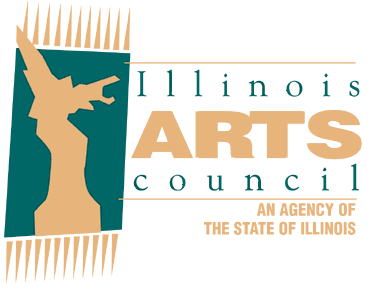
The Illinois Theatre
Association is partially
supported by a grant from
the Illinois Arts Council,
a state agency.
|
|
|
ITA UPDATES
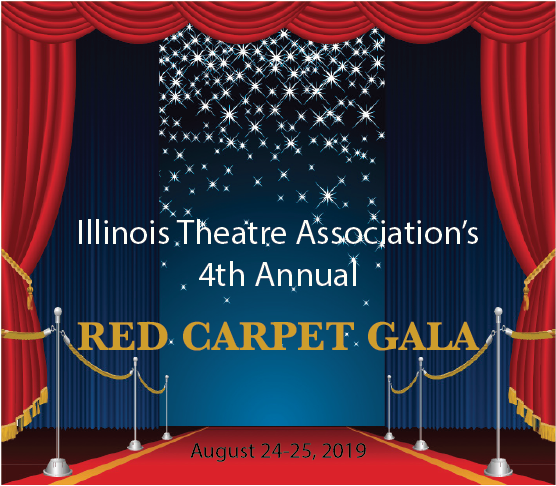
Registration is now open!
ITA's Annual Red Carpet Gala
August 24 & 25
Drury Lane Theatre
(one day passes available)
A must-not-miss celebration! Join the ITA as it honors excellence in all divisions of theatre. This two-day event features red carpet entry (black tie optional!), cocktails (cash bar) and hors d'oeuvres (sponsored by Drury Lane Theatre), piano ambiance, dinner and awards, a performance of
Drury Lane Theatre's And Then There Were None on Saturday, and a keynote presentation by Chris Jones (Chicago Tribune), ITA's Board Induction Ceremony, division meetings, and more on Sunday!
____________________________________________________
Travel With the President to Ten Chimneys
To Those ITA Members & Friends Who Joined Us
Thank you so much for attending our "Travel with the President" event to Ten Chimneys. Your presence made this event special for all of those who attended. Thank you for your great spirit and wonderful sense of community. I hope that you will consider participating in future Illinois Theatre Association events and perhaps joining our organization (if you're not already currently a member). If you had a great time, imagine what fun you can have by joining the other 566 members of our organization. For more information,
click here to visit our website.
I know that photos are not allowed in the home. However, I have collected many photos of the interior of the home over the years. I'd like to share those with you so that you can look back and fondly remember your visit with to Ten Chimneys. Please
click here
and download any of the photos you like. I know that the Lunts would be so thankful for your visit today and would encourage you to continue to share your love of theatre with friends, family, students, community member, and all you meet.
Thank you again!
All my very best,
Kevin Long
ITA President
________________________________________________
Coalescence Theatre Project
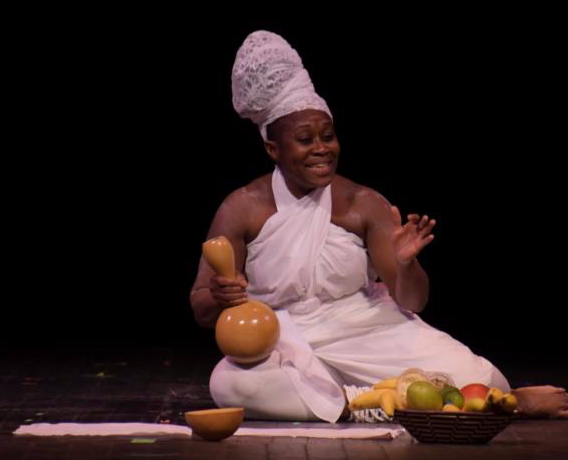 Congratulations to Coalescence Theatre Project and "Walking With My Ancestors" as it took top honors this past week at the National AACTFest in Gettysburg, PA! The show was chosen to represent Illinois at Nationals after winning both the ITA's Statewide Community Theatre Festival/Illinois AACTFest in March, and the Regional AACTFest in April. For more information on production click here for an article by Mary Cullen for WGLT.org, NPR from Illinois State University.
Congratulations to Coalescence Theatre Project and "Walking With My Ancestors" as it took top honors this past week at the National AACTFest in Gettysburg, PA! The show was chosen to represent Illinois at Nationals after winning both the ITA's Statewide Community Theatre Festival/Illinois AACTFest in March, and the Regional AACTFest in April. For more information on production click here for an article by Mary Cullen for WGLT.org, NPR from Illinois State University.
________________________________________________
Seeking Volunteer Positions for the IHSTF
The Illinois Theatre Association is seeking qualified individuals to serve the IHSTF in the following positions:
IHSTF Historian
IHSTF 2020 All-State Production Liaison
IHSTF 2022 Executive Director
Future IHSTF Planning Committee Member
|
Rest,
Rejuvenate & Relax!
By Annaliisa Ahlman,
ITA Secondary School Theatre Representative
If you're like me, you may recognize this conversation which I sometimes find myself having when I meet a new (non-theatre) person:
THEM. So, what do you do?
ME. Oh, I teach high school theatre and dance.
THEM. Cool! So what do you do in your free time?
ME. Beat. Ummmmm.... I teach high school theatre and dance?
It's easy to feel like we are our jobs. After all, it's an incredibly rewarding profession and we love what we do. We pour ourselves into our students, our productions, classes -- we spend so much time at school that theatre education better be a fun hobby for us as well as our profession. There is no better feeling than a student who finally "gets it" in class, a well-crafted moment onstage landing just right, or a thoughtful note from a graduate, but this job is challenging, and it can be difficult to find balance.
Well, my friends, summer is here! This season is a time of rest, rejuvenation, and relaxation - a season of self care, if you will. Self care is heavily marketed in our culture right now, but it doesn't need to look like a posh spa day or an afternoon of nothing but athleisure wear shopping. Self care is really just taking deliberate action to care for our mental, emotional, and physical health and well-being.
Teaching is one of the most stressful jobs today, and teacher burnout has been the topic of many national articles recently. By focusing on ourselves over the summer and creating strategies to take with us into next school year, we can be better prepared to manage the time, energy, and attention required by our profession.
Click here for some tips for summer self care practices for rejuvenation from Medium.com.
The "Calm" mindfulness app has opened their paid content for FREE to teachers through the Calm Schools Initiative. You could use the app in your classroom, or just on your own.
Click here to sign up on their website.
|
Inspiring Literature - Creating Original Works
By Elisabeth Westphal,
ITA Creative Drama Representative
I having been writing book reviews for the American Alliance for Theatre and Education K-8 Network. Below are some of the books that have inspired me to create original work with young people.
Making a Leap
Theatre of Empowerment
A Practical Handbook for Creative Drama Work with Young People
This book has many practical suggestions for devising with studen
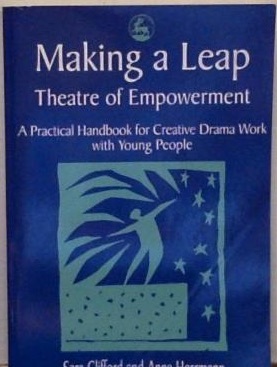 ts. It covers how to recruit and facilitate a group. It has information on how to train students to prepare them to work as an ensemble. I found Chapter Three the most interesting where various techniques to devise a show are described. I used some of the suggestions about interviewing subjects to gather material. The book also addresses to how to tour a show and how to evaluate its effectiveness. If you have never devised a show before with students this is a great resource to get you started.
Staging Social Justice -
Collaborating to Create Activist Theatre
Edited by Norma Bowles and Daniel-Raymond Nadon
This book explores the work of the theatre company, Fringe Benefits, through a series of essays about the methods they use to
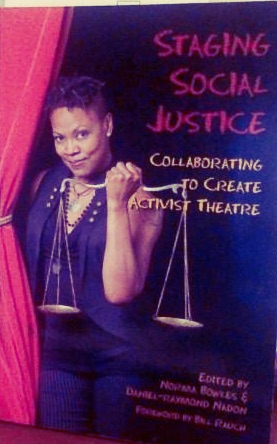 create works on topics of social justice. With stakeholders, the group uses a democratic process to quickly script a work ba
sed on the experiences and
knowledge
of the participants. The scripts are often taken to a different group to create the performance.
The book focuses on six aspects of devising/ playwriting. The first section discusses devising through collaborative decision making. Ever
yone of the creative team must agree with the items that are included in a work. The essays also explore the impact of theatre for social justice and how the impact can be measured. Major themes of the book are community and coalition building and creating a safe space in the devising process. Some of the essays are easier to read and more relevant to teaching artists than teachers in public schools but teachiers are sure to find interesting ideas about collaborative work. I especially like the Appendix which provides an outline of their methods and materials such as the Pyramid of Hate.
Brave New Voices -
The Youth Speaks Guide to Teaching Spoken Word Poetry
by Jen Weiss and Scott Herndon
This is a great book if you have ever wanted to do a poetry performance in a devised work. The program
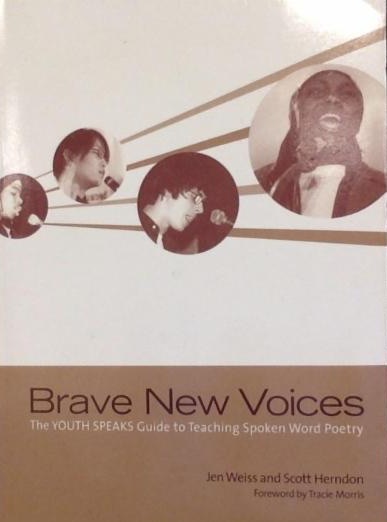 Youth Speaks has been around for years. The book covers how to organize a group and gives examples of writing from t
heir participants but what I like best is
each chapter has examples of poetry writing exercises and activities to promote performance skills that are scaffolded and fun. I like that it teache
s how to guide the s
tudents through creating the rhythm of the poetry as well as navigating the politics of slam performances. It has a great chapter on how to get solid revisions of the writing and better performances.
Youth Speaks has been around for years. The book covers how to organize a group and gives examples of writing from t
heir participants but what I like best is
each chapter has examples of poetry writing exercises and activities to promote performance skills that are scaffolded and fun. I like that it teache
s how to guide the s
tudents through creating the rhythm of the poetry as well as navigating the politics of slam performances. It has a great chapter on how to get solid revisions of the writing and better performances.
|
Know Who You Are
By Richard Arnold, Jr.
ITA College/University Theatre Representative
Currently our design studio is completely covered with stacks of photographs. Some are color, but most are black and white. This project came about because we were forced to move our archives from its storage space under the stairs.
The Fire Marshall frowned upon potentially flammable items beneath the stairs to the second and third floors of the building.
Most everything in
 |
|
 |
Elmhurst College - Theatre at the Mill
|
the archives was already in some semblance of order, with the exception of the photographs. Now was the time to tackle the project. With help of Tracy, one of our students, we have sorted them by show, based on costumes, scenery or actors. The next step is to identify the productions. This will take a while. Plays have been presented at Elmhurst College since the mid 1920's. It is interesting to see how the theatre program has changed over the years. In fact, we are about to change once again. EC has decided to separate Communications and Theatre. Beginning this fall, we will be the Department of Theatre and Dance.
This is an exciting prospect for those of us in the program, and a little scary too. How will the administration see us? Do expectations change? Will this effect recruitment? Who are we?
|
|
 |
|
From
The Tempest
|
 |
Being a part of a multi-headed department (we used to be be communications, speech pathology and theatre) it is easy to get caught up in the function of the whole. We had our own focus and goals, but they were tempered by the needs of the larger department. Now, we are on our own with every opportunity to be exactly what we want to be. We have the opportunity to create our own identity based on the interests of our faculty and the needs of our students.
I find myself in an interesting place. I am looking at photos of what Elmhurst College Theatre Program has done for the last 90 years, and looking forward to the prospect of what Elmhurst College Department of Theatre and Dance could become. We all need to put ourselves out there. What is our mission? How are we different than others? What are our strengths? Ultimately these are the things that create identity and provide the vision to be the best we can be. This is what will get people excited about what you are doing. This is what will attract prospective students. This is what will create support from administration. The possibilities keep it fresh and rewarding. ake some time this summer to look at your program's past and present, and use them to get excited about your future.
|
Veteran Arts Administrator on the Awesome Challenges of Building a Loyal Audience
By Joan McGrath,
ITA Professional Theatre Representative
 When Bridget McDonough co-founded Light Opera Works with Phil Kraus and four colleagues, it was 1979 and she was a 23-year old arts administrator/choreographer with oversized entrepreneurial show business dreams.
130 productions later, those dreams have been realized with artistic excellence and considerable business savvy.
The company's first production "HMS Pinafore" was mounted at Evanston's Cahn Auditorium in 1981; 3500 tickets were sold.
Today, in its 39th season, the renowned world-class company, now renamed
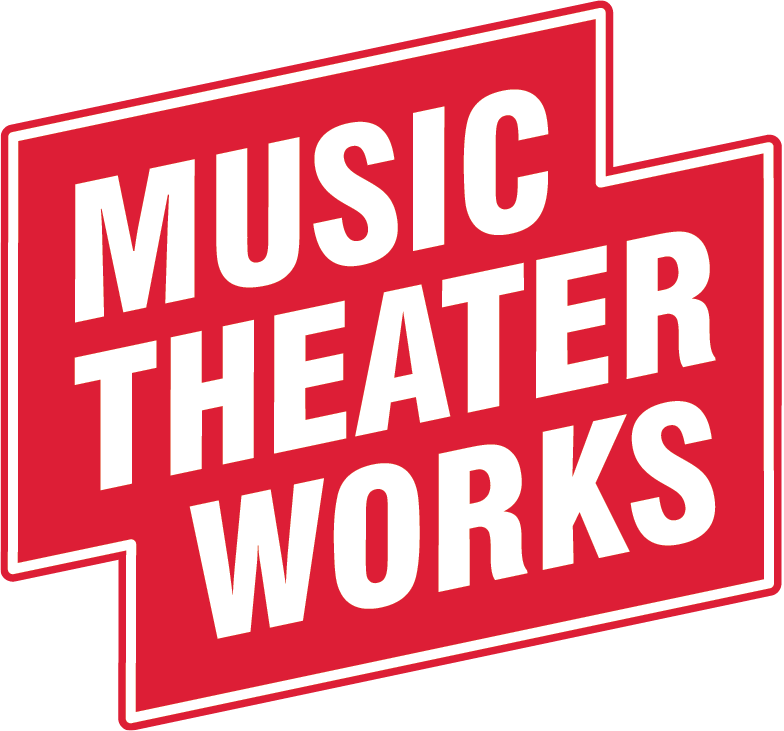 Music Theater Works (MTW), still performs at the 1000-seat Cahn Auditorium in Evanston.The scale is greater today: Broadway-quality costumes and sets and a 24-piece live Union orchestra. Loyal season ticket holders and enthusiastic single ticket fans applaud three mainstage musical productions and one concert style revue every year. The company has produced legendary musicals and groundbreaking debuts. This summer they secured the Chicago professional premiere of "The Hunchback of Notre Dame" which was reworked for the stage from the Disney movie by Alan Menken and Steven Schwartz.*
General Manager McDonough is justifiably proud that Music Theater Works is among a very small group of performing arts companies still robustly in business after four decades. But she says the challenges have shifted substantially.
Music Theater Works' annual budget is $1.5-million. Ticket sales account for 60% of that. (Similar to most not-for-profit companies, MTW relies on tax-deductible contributions to balance the ledger.) The ratio of their season ticket holders (MTW currently has 1600) to single ticket buyers has altered in recent years. This is consistent across the industry: subscription buyers for live performances - opera, dance, theatre - have diminished.
Why are fewer people are willing to commit to supporting one single theatre?
According to McDonough, "Unlike the loyally repeating patrons of the past, today's millennials look for "one offs": singular and unique experiences they can share on Instagram. They're able to select, stream and see video entertainment all the time, any time. When they go out and invest in a live experience, they want it to be really Special! New! Nifty! This generation finds it less appealing to buy a series for the same theatre every year. They are more willing to shell out $500 for a happening event like "Hamilton" than to commit a fraction of that to the theatre down the street. Consequently, to stay in business, today's arts managers also need to aggressively pursue single ticket buyers."
McDonough offers community and professional theatres her perspective on growing tomorrow's audiences.
IT'S NO LONGER JUST ABOUT THE WORK ON STAGE.
Community and professional companies need to think beyond the footlights. Patrons seek new value-added experiences: post-show interaction with the actors, drinks poured at a lobby bar that can be taken to one's seat, homemade cookies at intermission. Some theaters have experimented with complimentary concessions. (McDonough herself rejects slurping and sipping during the show as disrespectful to the performers. But, as she says, "I am old...").
LOOK BEYOND TRADITIONAL MARKETING
Advertising, mail brochures, e-blasts, social media -- all are still useful. But the new "word of mouth" tool is Social Influencers, actively recruited individuals who will enthusiastically recommend specific performances to their ample contacts.
SEASON TICKET HOLDERS EXPECT EXCELLENCE. THAT'S A GIVEN...AND THAT'S NOT ENOUGH
What makes an organization a "standout" is beyond putting on great shows. It's critical to make each patron visit a more unique event. Involve them with behind-the-scenes tours. Invest them with seminars, lectures, staged readings of new works, themed festivals.
ACCOMMODATE WITH FLEXIBLE SUBSCRIPTIONS
To compete successfully, theatres need to offer members ease of scheduling, like liberal exchange policies and partial season passes. Some theatres don't even market traditional "season tickets", but will offer subscribers, for example, a 5-admission package that can be redeemed for 5 tickets for one performance or one ticket for 5 performances.
GENERATE LOYALTY BY BEING WELCOMING
Treating people well and making them feel part of the theatre's "community" is vital. Bridget McDonough and Artistic Director Rudy Hogenmiller personally greet MTW patrons as they arrive for a performance and engage them in conversation at intermission and as they exit. Their embracing curtain speech is a lights-up conversation. Every effort is made to connect with ticket buyers and let them know they are appreciated.
As MTW's longevity proves, to be sustainable, arts organizations have to keep inventing new ways to respond to the desires, tastes and changing lifestyles of their invaluable patrons.
###
*Music Theater Works' 2019 repertoire, directed by Artist Director Rudy Hogenmiller, includes "How to Succeed in Business Without Really Trying," (June 8-16), "The Hunchback of Notre Dame" (August 17-25) and "Josef and the Amazing Technicolor Dreamcoat" (December 21-31). The season also features "Lerner and Loewe's Greatest Hits," a concert performance at Nichols Concert Hall, Evanston.
Click here to reach Bridget McDonough at
Music Theatre Works.
|
Incorporating the Literacy Devices Into Elementary Drama Lessons
By
Stacy Deemar, ITA Member
Perhaps it's the English teacher in me. I get excited about literary devices. Not only do I enjoy the creative writer's ability to utilize these elements in storybooks, but I feel compelled to identify and discuss these great devices with young scholars. Identifying literary devices does not digress from the drama lesson but rather enriches students understanding of the text and all of the creative possibilities to dramatize. By consistently recognizing these devices and briefly discussing them within drama lessons, students will learn to independently recognize these elements, make connections between stories that utilize similar devices, and apply their knowledge of literary devices to other stories they read and write.
There are many different types of learners in our classrooms including visual, auditory, kinesthetic, and read/write. The more modalities we use to teach our drama lessons, the more likely all of our students will learn the intended lesson. When reading storybooks aloud, use the document camera that projects the entire page onto the smartboard so the children can see the pictures and the text. Prior to engaging in the kinesthetic part of the lesson where students may be engaged in an improvised scene, narrative pantomime, tableau, etc., identify literary elements from the text so students can read, see, and listen to the text simultaneously.
There is no shortage of storybooks that have both wonderful playable action for dramatizing as well as literary devices imbedded into the text. Some favorites to use in second grade drama are:
- Roller Coaster by Marla Frazee
- Tacky the Penguin by Helen Lester
- The Great Fuzz Frenzy by Janet Steven and Susan Stevens Crummel
- Horton Hears a Who! by Dr. Seuss
Roller Coaster, an elementary book about people going on a roller coaster ride, is a great story to teach onomatopoeia. The words "Clickity, clackity. Clickity, clackity" are written twice. Begin with discussions about why the author might have chosen to write the sounds twice and how sounds can be repeated until they stop or fade away. In this example of onomatopoeia, introduce alliteration and the benefits of using this mechanism. Again, when students see, read, hear and say the words aloud, one or more of those methods will clarify the concept.
Other onomatopoeia in
Roller Coaster used to describe what riders hear on the roller coaster include "whoosh", "zips", "zooms", and "whee". These examples of onomatopoeia are written in a larger font. The letters are all capitalized and written in red. Furthermore, these words are not typed horizontally on the page. Instead, the arrangement of the words is in the form of upward angled lines that look similar to a roller coaster going up the track and/or a curves like the roller coaster makes when it does loops. The artistic page layout is used to visually stimulate the reader and highlight the onomatopoeia.
Tacky the Penguin, an elementary storybook about a penguin named Tacky who lacks social etiquette, is a wonderful source for teaching personification. On the front cover of the book, the main character who is a penguin, is wearing a flowered shirt with a purple and white checkered bow tie. Tacky is surrounded by a bear and two wolves wearing a hats, scarves, pants, boots, sweaters, jackets and they are standing on two legs. Define personification and ask the students what they see on the front cover that are examples of personification.
Throughout the story, there are penguins who talk, sing, dance, march, play an accordion, hand shake, hug, etc. Identify these great action verbs for the students before diving into the dramatization. Discuss other actions that personify the penguins and have students create and develop their own scene. Finally, project the onomatopoeia on to the smart board so students can see that the word "thump" written three times in italicized writing. Have students create other onomatopoeia for that moment in the story or add onomatopoeia to other areas of the story.
The Great Fuzz Frenzy is a story about teamwork that elementary students admire. When a tennis ball falls into a prairie-dog hole, the prairie-dogs discuss the purpose of the mysterious object and they experiment with it. At the beginning of the story, there is beautiful onomatopoeia written in large font with capital letters. Words used to describe the ball going down the prairie-dog hole include "Boink!", "Rumble", "Thump!" and "Plunk". Project the text on to the smart board, read it aloud, and have the students listen. Read the text aloud a second time simultaneously with the students.
The frequent use of alliteration in the prairie-dogs names and their actions make
The Great Fuzz Frenzy a great book to introduce students to alliteration. Project the cover of the book on to the smart board, define alliteration, and direct the students attention to the alliteration in the title. While reading aloud each page that is projected on to the smart board, ask students to find examples of alliteration including "Big Bark", ""gutless groundhog", "ridiculous rodents", "fuzzy foolishness", "fuzz freaks", "fuzz frenzy", "fuzz fandangle", fuzz fiesta", etc. When students are working in small improvised scenes, they can incorporate alliteration into their creative dialogue.
Dr. Seuss's
Horton Hears a Who! is a robust story with an abundance of literary devices that should be reserved for the latter half of the school year. This memorable tale about friendship has the main character, Horton the elephant, going to extreme measures to convince others around him that everyone should be treated fairly. Students have an affinity for Dr. Seuss books because of the cartoonish illustrations. Each character's emotions are clearly illustrated on their facial expressions and body language. Thus, the images and text are best appreciated when projected onto the smart board so students can see the enlarged images while the text is being read.
After reading the first page of the book and students have participated in a narrative pantomime or a tableau of Horton enjoying the "cool of the pool," have a student define poetry. Explain rhyme scheme and show how Dr. Seuss utilized this technique in his writing. Ask students why a writer creates a rhyme scheme. Continue reading the story through Horton's conversation with the kangaroo. Invite students to explain how Horton and the kangaroo are being personified and highlight the simile, "Why, that speck is as small as the head of a pin."
Introduce the concept of repetition. Ask students why the author has Horton stating, "A person's a person, no matter how small.", multiple times throughout the story. This is also a great segue into introducing theme and brainstorming collectively possible themes of the story. Draw student's attention to when the kangaroo refers to Horton as a the "biggest blame fool" and review alliteration. Finally, while dramatizing the story in a myriad of activities, highlight the metaphors and onomatopoeia too.
Just like peanut butter goes with jelly and hotdogs go with a bun, literary devices go together with a drama lesson.
|
Educational Benefits of Performing Arts in Childhood & 10 Tips to Encourage Creativity
By
Juleen Murray Shaw
Intro by Peggy Hupp
ITA Theatre for Young Audiences Representative
I have had the opportunity to be a part of children education classes for parents to discuss the positive impact of the arts for children and how parents can nurture their children. Thru some good information parents can better equip their children to look at the world from different vantage points.
Children have an almost non-stop desire to be creative. They live in a mental space that is constantly curious, expressive, physical, at play, and engaged. The importance of nurturing this creativity is well documented and has amazing benefits. A
|
|
 |
| Juleen Murray |
 |
child who is exposed to and involved in the performing arts often develops a greater capacity for learning. Through the arts, children are encouraged to depend on themselves creatively, so they learn how to solve problems better, while developing the ability to rely on themselves to bring new ideas into the world. They learn to listen to their own compass; speak from their souls.
This is not to say that all children should become professional performers. It simply means when children participate in the performing arts they become better equipped to look at the world from many different vantage points. The arts also innately provide a spiritual component. When a child engages in performing arts activities they are stripped of pretenses and they speak from the heart.
Then, there are the academic benefits. The following is from Americans for the Arts:
Young people who participate in the arts for at least three hours on three days each week through at least one full year are:
- 4 times more likely to be recognized for academic achievement
- 3 times more likely to be elected to class office within their schools
- 4 times more likely to participate in a math and science fair
- 3 times more likely to win an award for school attendance
- 4 times more likely to win an award for writing an essay or poem
Add to these the benefits to brain development and you have a recipe for children who grow up to give the world amazing gifts.
10 Tips to Nurture Your Creative Child:
- Encourage play acting and dress up; this stimulates a child's imagination.
- Create a special "acting out" area in your home. Build a mini-stage, hang curtains from ceiling hooks, throw some dress-up clothes in a costume chest and voila; instant theatre for your little thespians.
- Encourage your child(ren) to compose or make up their own songs and rhymes.
- Put on some beautiful instrumental music; classical or jazz, grab crayons or paints, some craft paper and have your child "draw what they hear". This allows them to become lost in the music and makeup their own story. Then ask them what they heard. This will help them develop their story telling ability.
- Encourage repetition. Kids love to find a song or something they find funny and do it again and again and again. Embrace this quality.
- Read every day to your children. A comprehensive use of language skills and word play are critical for all children, including the budding artist, and one gets this from reading consistently.
- When reading rhymes, poetry, Dr. Seuss, A.A. Milne, etc. to your child, emphasize the rhythms. Rhyming books, stories, poetry are inherently musical which helps to develop a child's "ear" for language.
- Our voices are capable of a myriad of sounds. When reading to your children use different vocal qualities and dialects. Don't worry; it doesn't have to be perfect! Kid's just love it when you act out and use different voices for different characters.
- Take your time when you read to your children. When you immerse yourself in a story, they will follow suit.
- Stop at a cliff hanger when reading narrative so they can't wait to hear the next installment
Click here for more articles by Juleen Murray at Ezine Articles. 
|
Terrance McNally - An Intimate
Interview
Submitted by
Don Shandrow
ITA Community Theatre Representative
"In honor of his Tony Award for Lifetime Achievement, we're paying special tribute to Drama Guild Foundation Board Member Terrence McNally!
Click here
to watch an intimate conversation between Terrence and Pulitzer Prize winning playwright Annie Baker, in a never-before-released episode of Legacy Project."
|
|
|